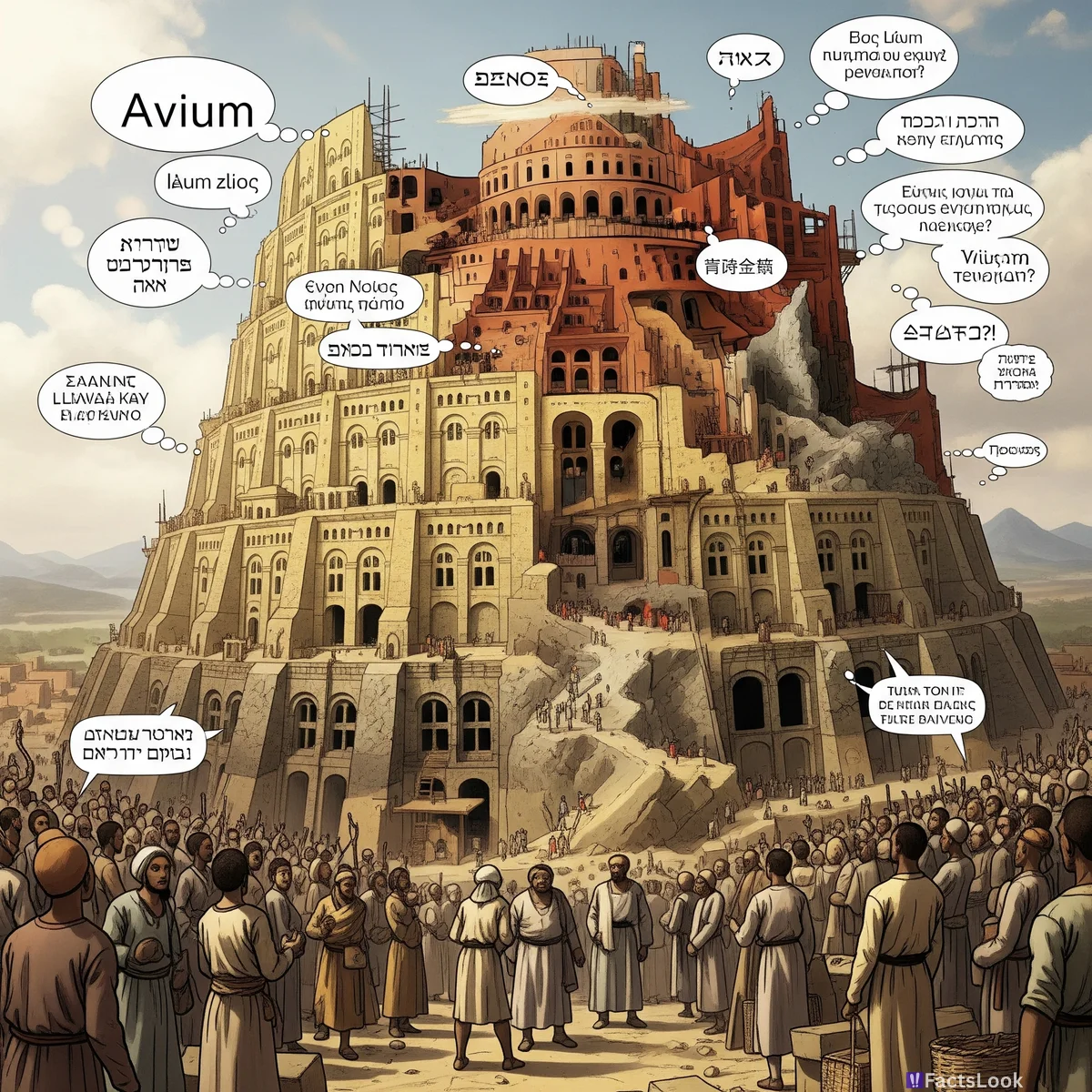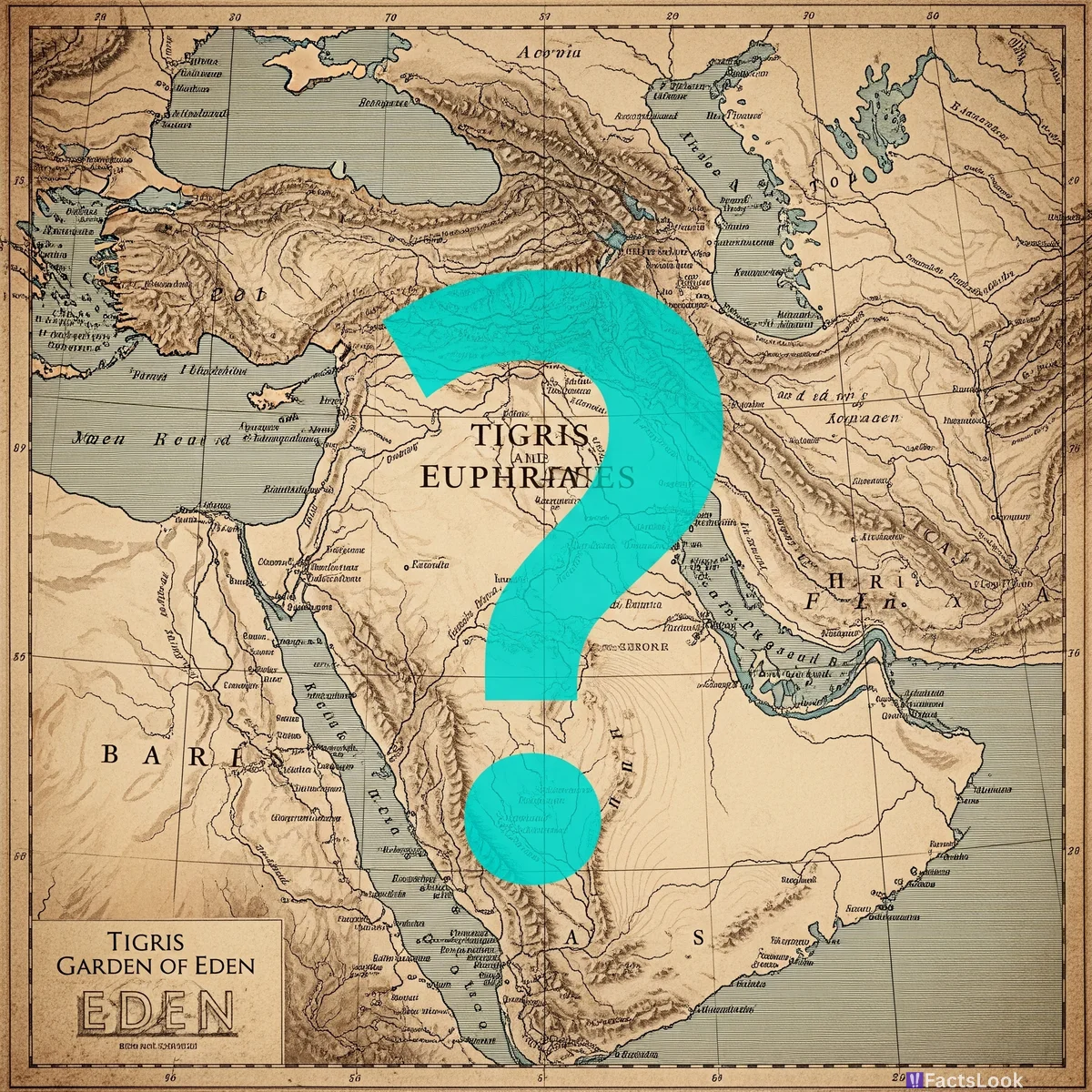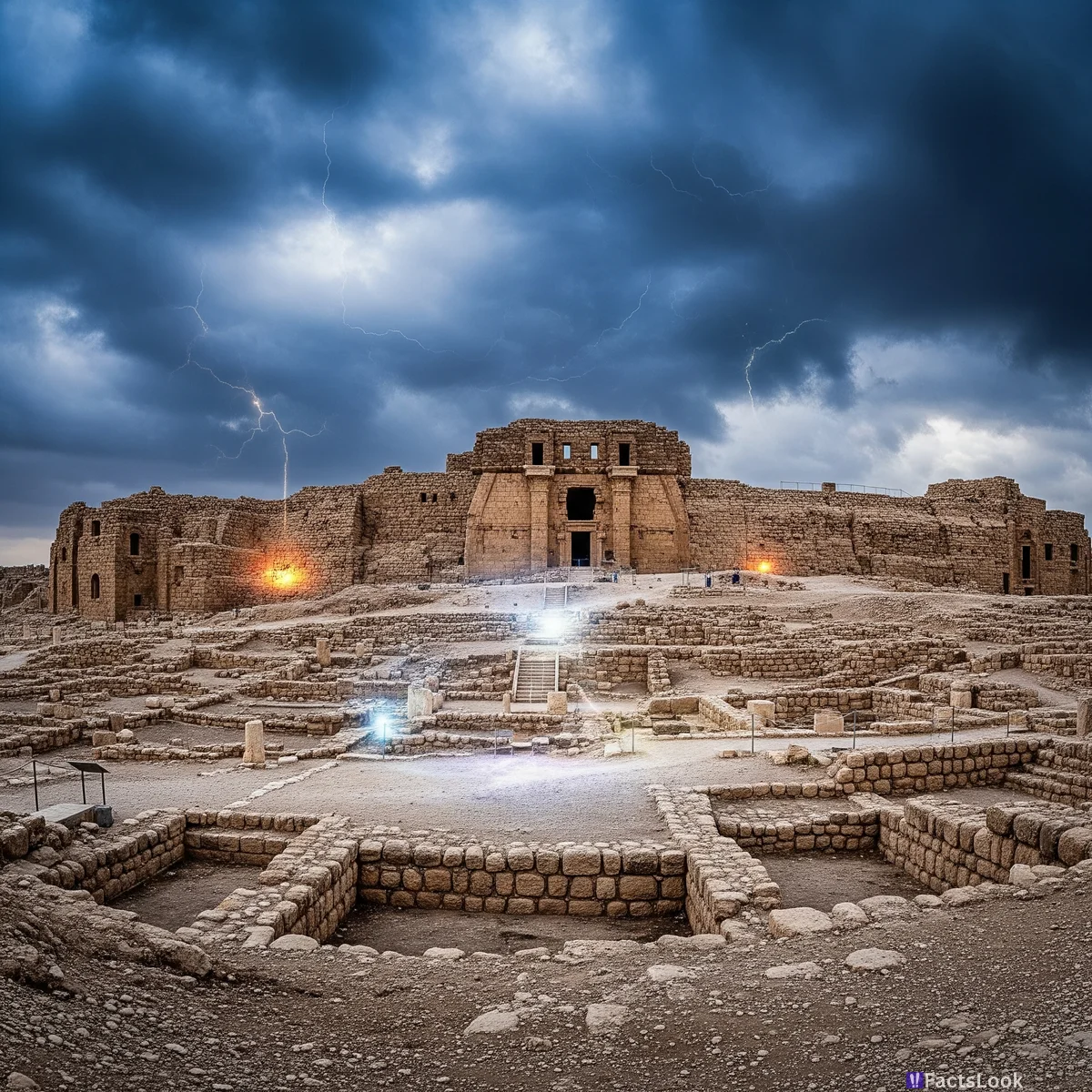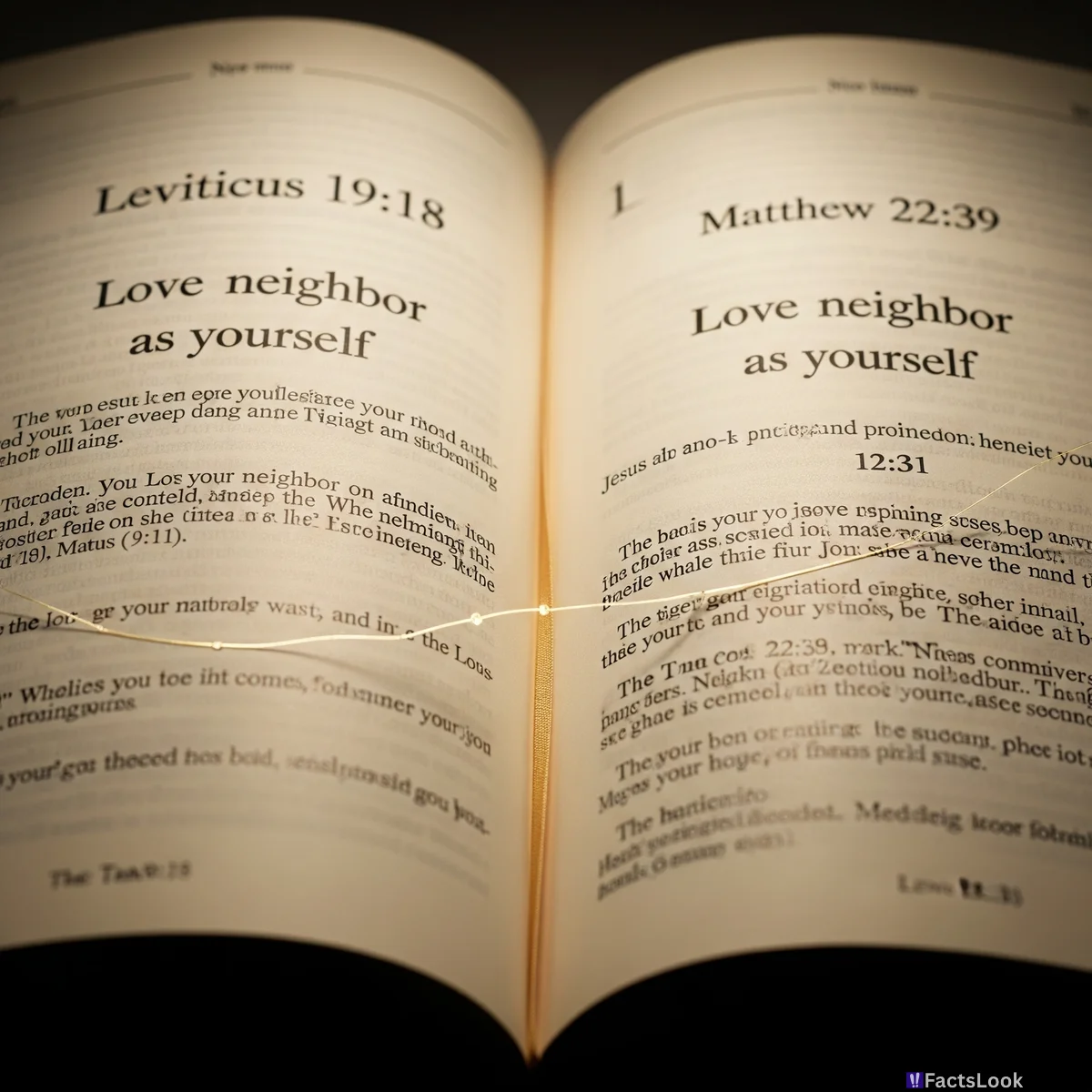Beyond Sunday School: 25+ Amazing Bible Facts & Religious Trivia You Won't Believe! - FactsLook

Unlock the Bible's Hidden Secrets: Prepare for a Journey of Astonishing Facts!
Think you know the Bible? Think again! Get ready to embark on a captivating exploration of mind-blowing Bible facts and religious trivia that stretch far beyond Sunday school lessons.
Prepare to be amazed as we uncover lesser-known stories, surprising origins, and fascinating details that will forever change how you see the world's most influential book. Ready to have your perceptions challenged and your curiosity ignited? Let's dive in!
Fact 1: The Longest Chapter Isn't What You Think!
Many guess Psalm 119, renowned for its length, is the Bible's longest chapter. Surprisingly, Jeremiah 36 in the Old Testament actually holds this distinction in terms of word count.
Psalm 119, while lengthy, is structured with shorter verses, making Jeremiah 36, with its narrative prose, the true champion of chapter length.
Fact 2: 'Trinity' Never Explicitly Appears in Scripture
The concept of the Trinity—God as Father, Son, and Holy Spirit—is a cornerstone of Christian theology. However, the word 'Trinity' itself is never explicitly mentioned in the Bible.
It's a theological term developed later to describe the nature of God as revealed throughout scripture. The idea is drawn from various passages, not a single verse.
Fact 3: The Bible is a Library, Not Just a Book

The 'Bible' is a collection of books, not a single volume penned at once. It's more accurate to consider it a library, compiled over centuries.
The Old Testament encompasses 39 books (Protestant canon), while the New Testament holds 27. These books span diverse genres, from poetry and law to history and prophecy.
Fact 4: 'Rapture' Not Directly in the Old Testament
The term 'Rapture,' describing believers being taken to heaven at Christ's return, is a prominent concept in some Christian eschatologies.
However, the word 'Rapture' doesn't appear in the Old Testament. The concept is primarily drawn from interpretations of New Testament passages, particularly in Paul's letters and Revelation.
Fact 5: The Tower of Babel Story May Explain Linguistic Diversity

The Tower of Babel narrative in Genesis tells of humanity attempting to build a tower to reach heaven, and God confusing their language to halt their unity and progress.
This story is often interpreted as a mythological explanation for the diversity of languages spoken across the world today, stemming from a single, original language.
Fact 6: There Are Apocryphal Books Considered Scripture by Some
Besides the commonly known 66 books in the Protestant Bible, there's a collection called the Apocrypha or Deuterocanonical books.
These are included in Catholic and Orthodox Bibles, considered canonical scripture by them, but not by most Protestants. Books like Tobit and Maccabees are part of this collection.
Fact 7: Jonah's Fish Was Likely a 'Great Fish,' Not Necessarily a Whale

The story of Jonah and the 'whale' is iconic. However, the original Hebrew and Greek texts describe a 'great fish' or 'large sea creature,' not specifically a whale. The popular association with a whale developed later. This 'great fish' was divinely appointed to swallow Jonah.
Fact 8: The 'Garden of Eden' Location Remains a Mystery

The Bible describes the Garden of Eden as a paradise, but its geographical location is never precisely detailed. While the Tigris and Euphrates rivers are mentioned as flowing from Eden, the exact spot is not specified and remains a subject of theological and geographical speculation.
Fact 9: The Ten Commandments Vary Slightly Across Denominations
While the core principles of the Ten Commandments are consistent, their numbering and specific phrasing can vary slightly across different religious denominations, particularly between Catholic, Protestant, and Jewish traditions.
These variations often stem from differing interpretations of combining or separating commandments.
Fact 10: 'Hell' in the Bible Has Multiple Meanings
The English word 'Hell' translates several different words from Hebrew and Greek in the Bible, each with distinct connotations.
'Sheol' in Hebrew refers to the grave or underworld, while 'Gehenna' in Greek describes a place of fiery punishment. 'Hades' and 'Tartarus' are also used, adding layers to the concept of 'Hell'.
Fact 11: The Bible Was Written on Papyrus and Parchment

The original manuscripts of the Bible were not written on paper as we know it today. They were primarily inscribed on papyrus, made from the papyrus plant, and parchment, made from animal skins. These materials were common writing surfaces in the ancient world before paper became widespread.
Fact 12: The 'Forbidden Fruit' Isn't Named in Genesis
In the Garden of Eden narrative, God forbids Adam and Eve from eating from the 'tree of the knowledge of good and evil.' However, the type of fruit on this tree is never specified in the book of Genesis. The popular association with an apple is a later tradition, not biblical fact.
Fact 13: The Bible Has Been Translated into Thousands of Languages
The Bible is the most translated book in the world. It has been translated, in whole or in part, into thousands of languages and dialects. This extensive translation effort reflects its global influence and the desire to make it accessible to people from diverse linguistic backgrounds.
Fact 14: 'Armageddon' Refers to a Real Place

Armageddon, often associated with a final apocalyptic battle, is derived from the Hebrew 'Har Megiddo,' meaning 'Mount Megiddo.' Megiddo is a real historical site in Israel, an ancient city and strategic location where many battles were fought throughout history.
The biblical Armageddon might allude to this historical significance.
Fact 15: The 'Golden Rule' Appears in Different Religions
The 'Golden Rule,' often phrased as 'Do unto others as you would have them do unto you,' is popularly attributed to Jesus.
However, similar ethical maxims appear in various religions and philosophies across the world, predating Christianity. This universal principle of reciprocity reflects a common human moral intuition.
Fact 16: Moses Isn't Directly Mentioned in the New Testament Gospels Very Often
While Moses is a central figure in the Old Testament and Jewish tradition, he is not mentioned as frequently in the Gospels of the New Testament as one might expect. Jesus is more often compared to or contrasted with Moses in terms of authority and fulfilling the Law.
Fact 17: The Bible Doesn't Clearly State How Many Wise Men Visited Jesus
The Christmas story often depicts three Wise Men or Magi visiting baby Jesus. However, the Bible doesn't specify their number.
It mentions 'Magi from the east' bringing gifts, but not how many there were. Three gifts are mentioned (gold, frankincense, myrrh), leading to the popular assumption of three Magi.
Fact 18: Several Old Testament Figures Lived Exceptionally Long Lives
The Old Testament mentions several figures who lived for hundreds of years, like Methuselah (969 years) and Noah (950 years). These exceptionally long lifespans are often interpreted symbolically or allegorically, rather than as literal historical accounts in modern scientific terms.
Fact 19: 'Love Your Neighbor' Was Already a Commandment in the Old Testament

Jesus emphasized 'Love your neighbor as yourself' as a core commandment. However, this command is not new to the New Testament. It's explicitly stated in Leviticus 19:18 in the Old Testament. Jesus highlighted and expanded upon existing Jewish ethical teachings.
Fact 20: Not All Psalms Were Written by King David
Many Psalms are attributed to King David, and he is indeed credited with writing a significant portion of the book of Psalms. However, not all psalms are Davidic. Some are attributed to other authors like Asaph, the sons of Korah, and Moses, indicating a collection from various sources.
Fact 21: The Bible Was Written Over a Period of Centuries
The books of the Bible were not written at once, but composed over a long period, spanning centuries.
The Old Testament writing process began perhaps around the 10th century BC, while the New Testament books were written in the 1st century AD. This timeframe highlights the Bible’s development within historical context.
Fact 22: Circumcision in the Bible Has Symbolic Meanings Beyond Physicality
Circumcision is a significant practice in the Old Testament, starting with Abraham.
While physically removing the foreskin, it carries deeper symbolic meanings within the biblical narrative, representing covenant, belonging to God's people, and spiritual purity—often extending beyond literal interpretation.
Fact 23: 'Faith' in the Bible is More Than Just Belief

The concept of 'faith' in the Bible, particularly in the New Testament, extends beyond mere intellectual belief or assent. It involves trust, commitment, and action. Biblical faith is often portrayed as active reliance and obedience to God, not just passive agreement with doctrines.
Fact 24: There Are Female Judges and Prophets in the Bible
While often perceived as male-dominated, the Bible features prominent women in leadership roles. Deborah was a judge in Israel, and figures like Miriam and Huldah are recognized as prophets. These women exercised spiritual and political authority within their historical context.
Fact 25: The 'Book of Revelation' is Highly Symbolic and Open to Interpretation

The Book of Revelation, the Bible's final book, is known for its vivid and symbolic language, filled with visions, beasts, and metaphors.
Its precise meaning and interpretation are widely debated among theologians and scholars. It's not meant to be read solely literally, but understanding its symbolism is key.
Fact 26: The Original Languages of the Bible Were Hebrew, Aramaic, and Greek
The Old Testament was primarily written in Hebrew, with some portions in Aramaic (like parts of Daniel and Ezra). The New Testament was written in Koine Greek, the common language of the Roman Empire at the time. Understanding these original languages provides deeper insights into the scriptures.
Fact 27: The Story of Adam and Eve May Symbolize Human Nature

The story of Adam and Eve in the Garden of Eden is often interpreted as more than just a literal historical event.
Many theologians view it as a symbolic narrative about human nature, temptation, free will, and the fall from grace, representing universal human experiences rather than just a singular couple.
Comments
Loading comments...